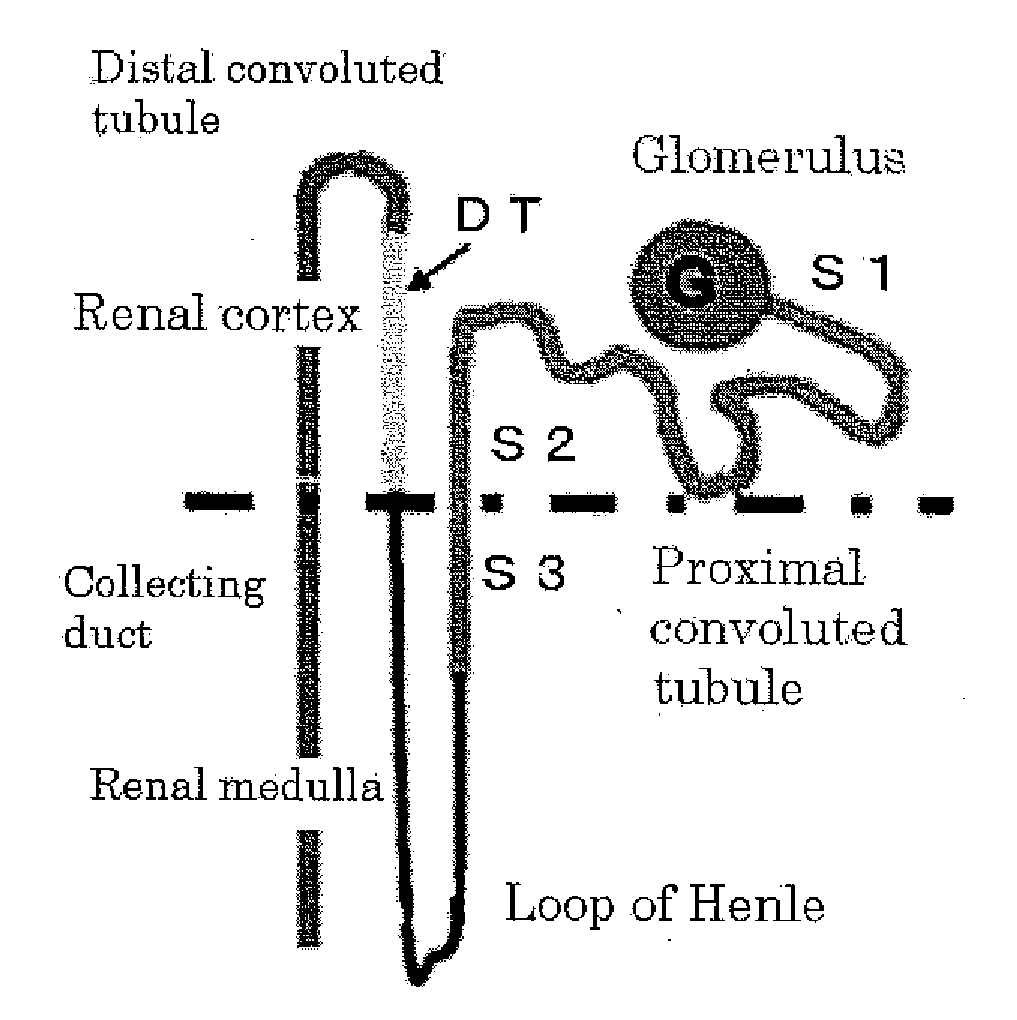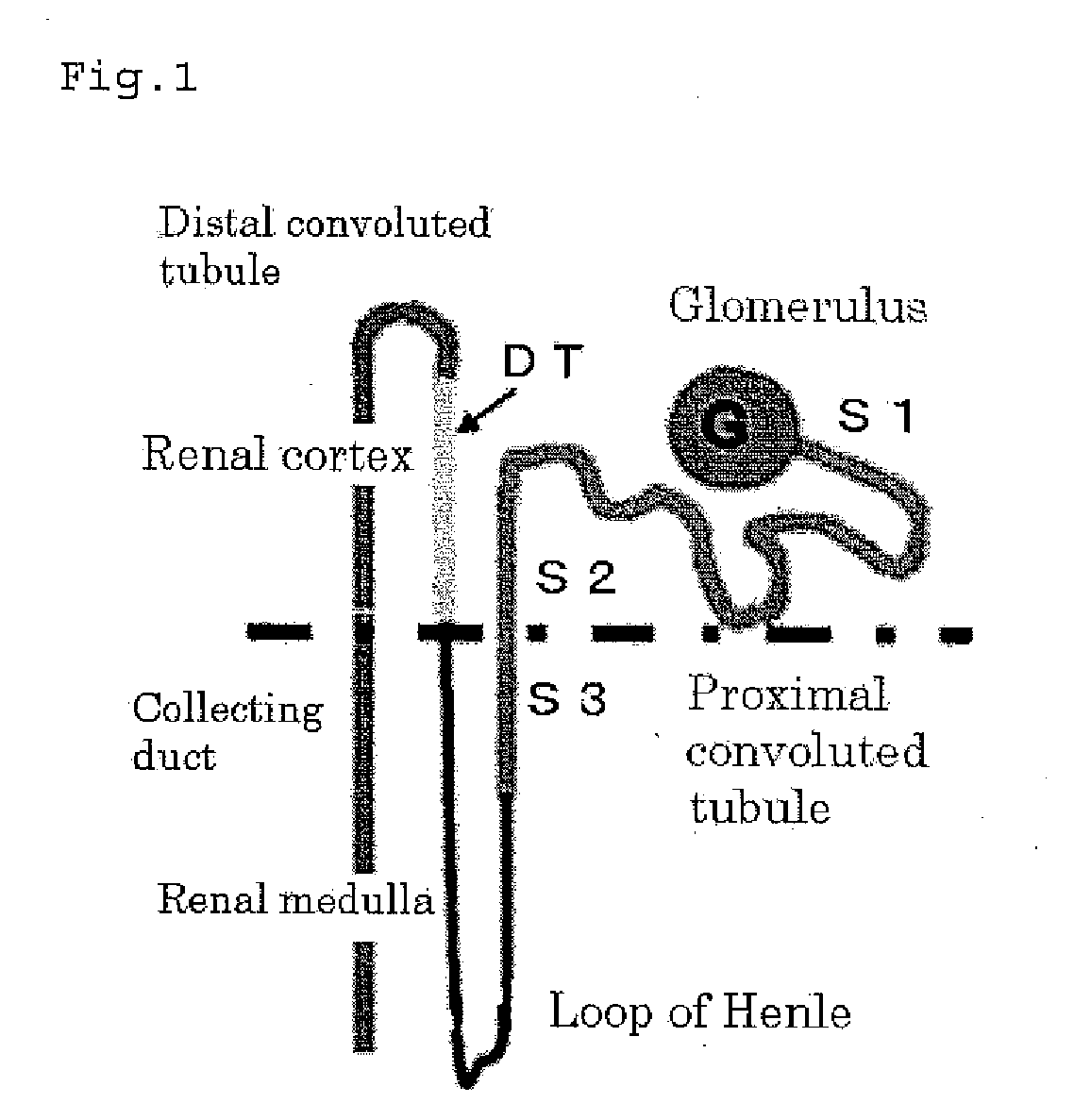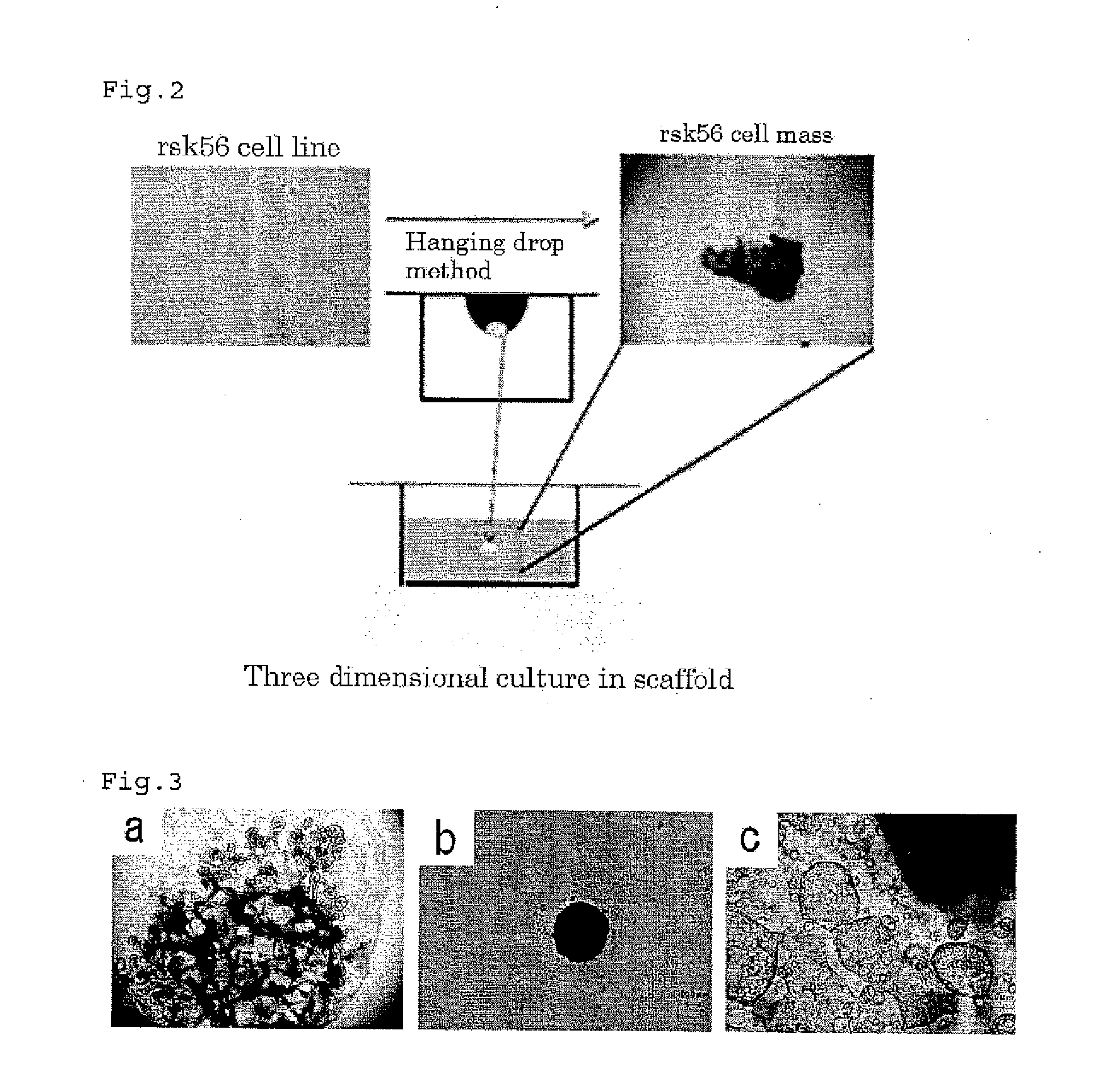Process for production of bioartificial organ
a bioartificial organ and process technology, applied in the field of bioartificial organ production, can solve the problems of chemically synthesized scaffolds, inability to regenerate organs and tissues, and difficulty in proliferating cells in a three-dimensional structure without using such anchorages
- Summary
- Abstract
- Description
- Claims
- Application Information
AI Technical Summary
Benefits of technology
Problems solved by technology
Method used
Image
Examples
example 1
Three Dimensional Culture Using Renal Stem Cells / Precursor Cells
[0074]The three dimensional culture was carried out by culturing renal stem cells / precursor cells by a hanging drop method and culturing the obtained cell mass in a scaffold composed of Matrigel™ (see FIG. 2).
[0075]1) Renal Stem Cells / Precursor Cells
[0076]Cells were isolated from the S3 region of the proximal convoluted tubule according to the method described in Patent Literature 4, and an SV40 gene was incorporated into the obtained cells capable of high proliferation by a lipofection method to establish a cell line. The obtained cell line is composed of the renal stem cells / precursor cells of the present Example and is hereinafter referred to as an rKS56 cell.
[0077]2) Production of Cell Mass of rKS56 Cells
[0078]A solution containing FCS (final concentration: 10% v / v), ITS-mix (manufactured by Gibco) (200 μL), dexamethasone (final concentration: 5×10−8M), HGF (final concentration: 5 ng / mL), and b-FGF (final concentrat...
example 2
Three Dimensional Culture Using Renal Stem Cells / Precursor Cells
[0081]Metanephric mesenchymal stem cells or ureteric bud cells were used in place of the rKS56 cells, and cultured in the same manner as in Example 1. The cultured morphological features on Day 21 of the three dimensional culture are shown in FIGS. 3b and 3c, respectively.
example 3
Morphological Features of Cultured Cells Depending on Cell Number Used for Producing a Cell Mass of rKS56 Cells
[0082]The rKS56 cells were cultured in the same manner as in Example 1, except that the number of cells upon producing the cell mass of the rKS56 cells were variously changed. A frequency of various cell morphological features that appeared at that time was confirmed. In FIG. 4, no lumen structure was observed in A, no assembled calices-like structure was observed and a glomerulus-like structure plus a urinary duct-like structure was observed in B, and all of the glomerulus-like structure, the urinary duct-like structure and the calices-like structure were observed in C.
[0083]As a result of the above and as shown in FIG. 5, the more sufficient differentiation-inducing property into renal tissues could be confirmed as the number of the cells used upon producing the cell mass of the rKS56 cells was increased whereas the sufficient differentiation frequency into the renal tiss...
PUM
 Login to View More
Login to View More Abstract
Description
Claims
Application Information
 Login to View More
Login to View More - R&D
- Intellectual Property
- Life Sciences
- Materials
- Tech Scout
- Unparalleled Data Quality
- Higher Quality Content
- 60% Fewer Hallucinations
Browse by: Latest US Patents, China's latest patents, Technical Efficacy Thesaurus, Application Domain, Technology Topic, Popular Technical Reports.
© 2025 PatSnap. All rights reserved.Legal|Privacy policy|Modern Slavery Act Transparency Statement|Sitemap|About US| Contact US: help@patsnap.com



